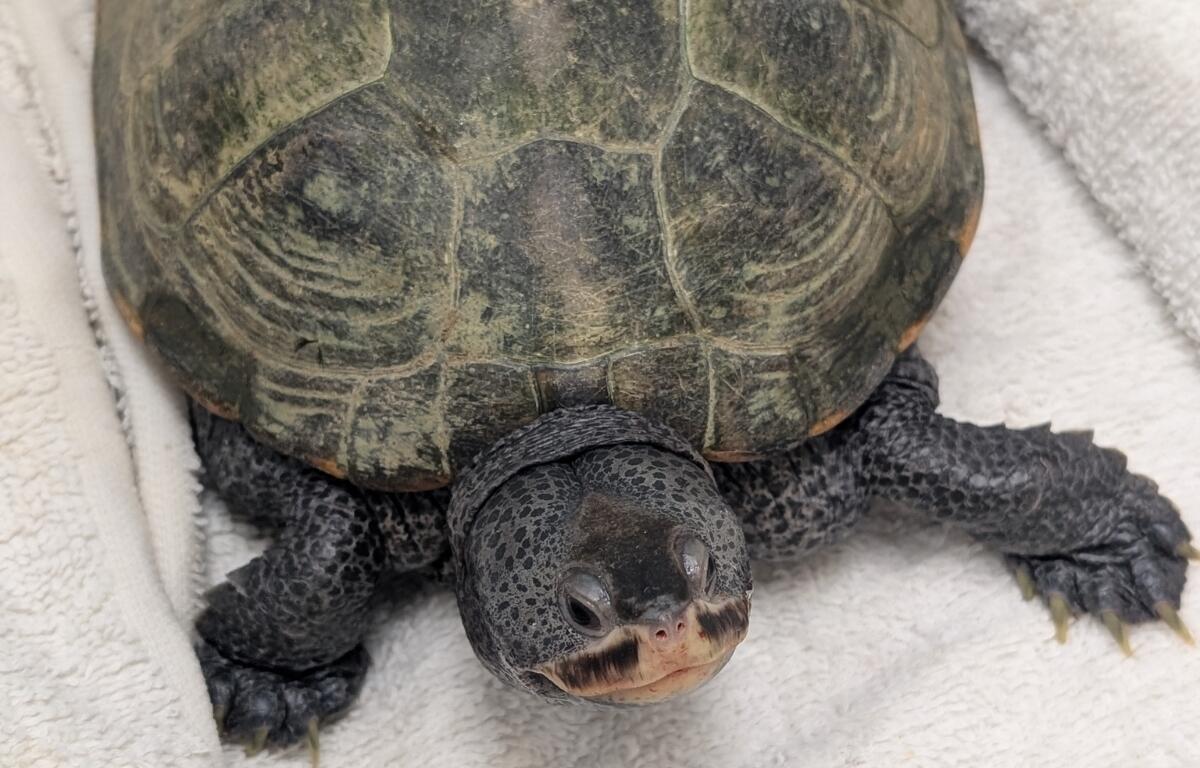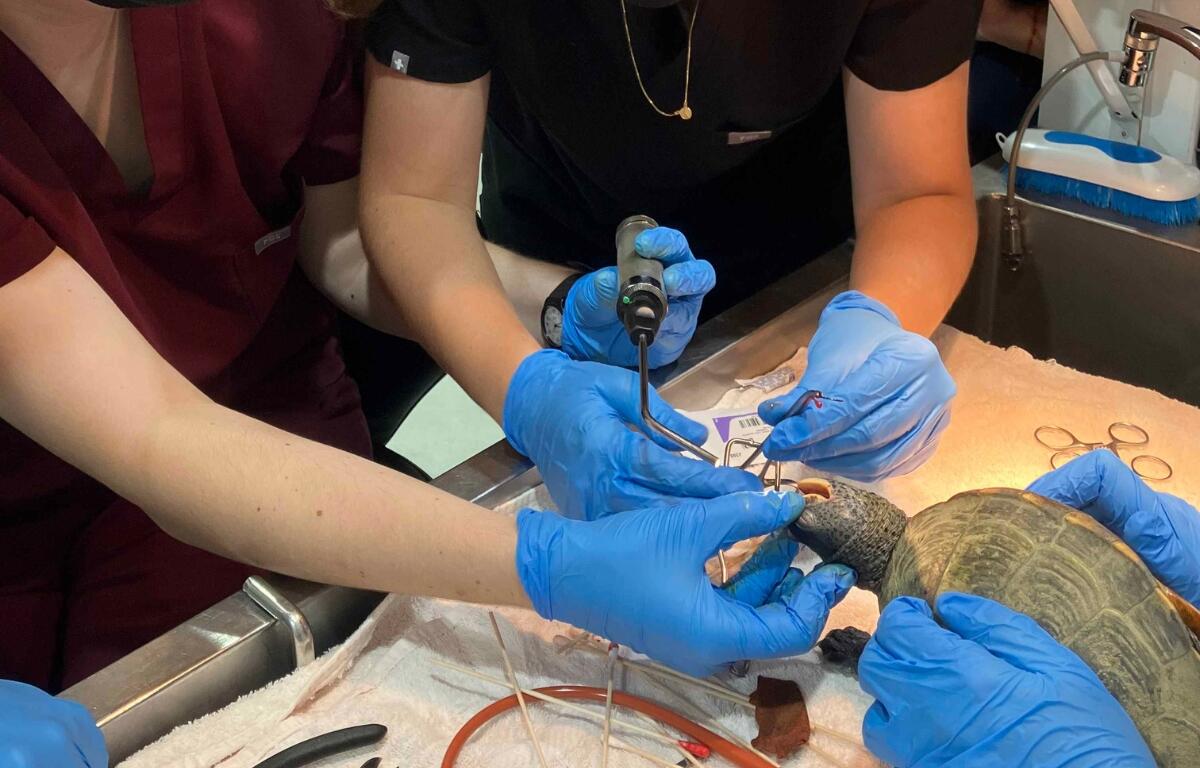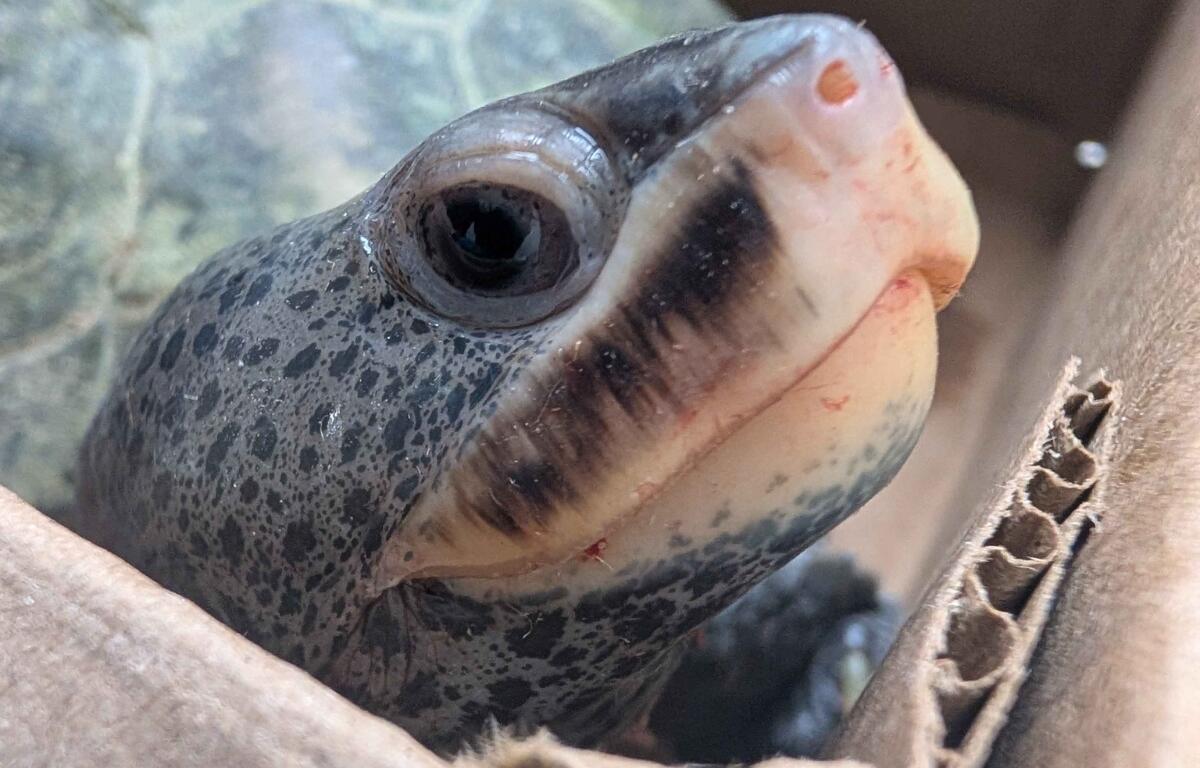WAYNESBORO, VA (Wildlife Center of Virginia) — On August 23, the Wildlife Center admitted a species they rarely treat — a Northern Diamondback Terrapin. This adult female is the first terrapin admitted to the Center in at least eight years, making her an especially unusual patient for the hospital.

According to Dr. Zack, one of the Center’s Veterinary Interns, “Northern Diamondback Terrapins are a super interesting species! They prefer brackish water (a mix of fresh and saltwater), which means they’re often found in coastal waterways. Interestingly, they’re the only exclusively estuarine turtle species in North America, and the Virginia Department of Wildlife Resources also lists them as a Species of Greatest Conservation Need according to their action plan.”
The turtle was accidentally hooked while someone was fishing in James City County. Staff at Chickahominy Wildlife responded quickly and transferred the terrapin to the Center for specialized care. Radiographs at the Center showed the hook lodged in the upper part of the terrapin’s esophagus. Even though she was bright, alert, and moving normally, her mouth was inflamed and bleeding — clear signs the hook had already caused some damage.
Already familiar with this type of procedure, the Center’s veterinary team knew removing the hook would be delicate work. Rachel Wolffe, a Licensed Veterinary Technician at the Center, explained, “While an exciting and unusual species for us, it was a fairly straightforward case of a fish hook removal. We see this commonly in our freshwater painted turtles, river cooters, and snappers.”

The team anesthetized the terrapin, located the hook, and made a tiny incision in the skin on the side of her neck. Dr. Zack shared, “Once we could see and feel the hook from the outside of her neck, we gently pushed the end of the hook through her skin, clipped off the end of the barbed hook, and then maneuvered the rest of the hook out through her mouth to minimize damage caused by the removal.” Overall, the procedure went smoothly, and the terrapin woke up without complications.
The terrapin is currently on pain medication, antibiotics, and fluids, and staff are monitoring her closely for any signs of bleeding or infection around her incision. Because the injury was so close to her airway, her prognosis remains guarded, but the staff are hopeful she’ll continue to make steady progress.
Though terrapins are a familiar sight in the Chesapeake Bay region, they are an uncommon admission at the Wildlife Center. Her story is also a reminder of the risks that fishing gear poses to turtles, birds, and other wildlife. Anglers can help by taking extra care when casting and by handling accidental catches responsibly — quick action and safe release can make the difference between life and death for wildlife.




